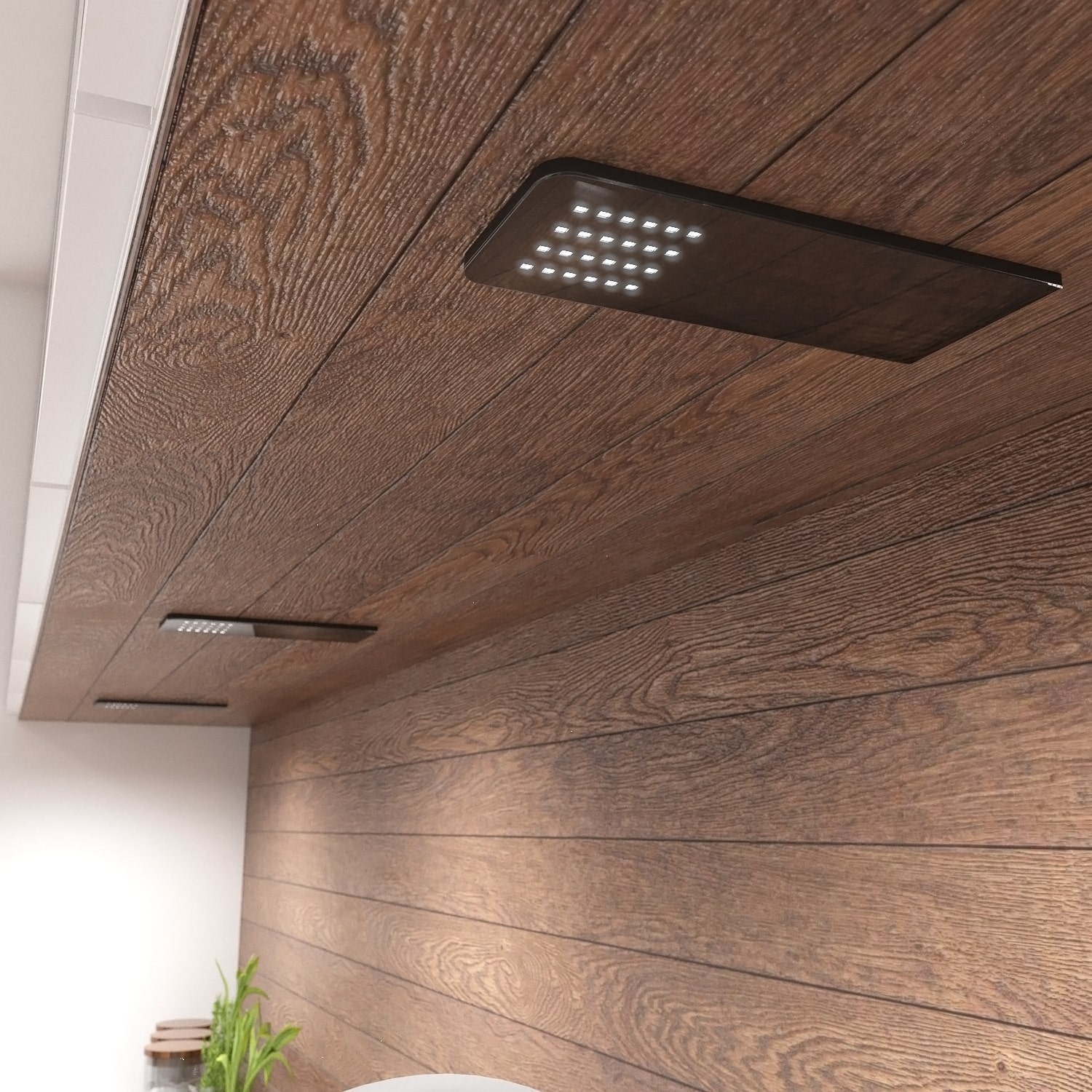Types of Energy-Saving Under Cabinet Lights

Right, so you’re tryna sort your under-cabinet lighting, yeah? Makes a massive difference to the vibe of your kitchen, innit? But you wanna be savvy with your energy bills, too. No one wants a mega-bill, right? Let’s break down the top choices.
Under-Cabinet Lighting Technologies Compared
Okay, so here’s the lowdown on the main players – LED, fluorescent, and incandescent. We’re comparing energy use, how long they last, and the cost. Think of it like a kitchen appliance showdown, but way more energy-efficient.
| Lighting Type | Energy Efficiency | Lifespan (Hours) | Cost |
|---|---|---|---|
| LED | Very High (80-90% efficient) | 50,000+ | Higher initial cost, but lower long-term cost |
| Fluorescent | High (60-70% efficient) | 10,000-20,000 | Moderate initial cost |
| Incandescent | Low (10-20% efficient) | 1,000-2,000 | Low initial cost, but high running costs |
Advantages and Disadvantages of Each Lighting Type, Energy saving under cabinet light
Each type has its own perks and downsides. Think of it like choosing your mates – some are good for a laugh, some are good for a quiet night in.
LEDs are proper bright, come in loads of colours, and are dead easy to fit. Downside? Can be a bit pricey upfront. Fluorescents are alright, decent brightness, but they can be a bit clunky to fit and the colour isn’t always spot on. Incandescents? Cheap as chips, but they guzzle energy like crazy and don’t last long. Proper old school, but not ideal for your energy bills.
Dimming Options for Under-Cabinet Lights
So, you want to set the mood, right? Dimmable lights are a total game changer. LEDs are generally the most versatile, loads of options for dimming. Fluorescents can be dimmed, but it’s not always straightforward, you might need a special dimmer switch. Incandescents are easy peasy to dim with a standard dimmer, but remember, they still use a ton of energy.
Installation and Setup of Energy-Saving Under Cabinet Lights: Energy Saving Under Cabinet Light

Right, so you’ve got your snazzy new energy-saving under-cabinet lights – wicked! Now, let’s get them bunged in. It’s not rocket science, but a bit of know-how will make the whole thing a doddle. We’ll cover hardwiring, the plug-in/battery options, and then how to get the best light for your kitchen.
Hardwired Under-Cabinet Light Installation
Getting these bad boys hardwired is a bit more involved, but it’s totally doable if you’re a bit handy. Remember, safety first, alright? If you’re not comfy with electrics, call a sparky – it’s not worth risking a nasty shock.
- Switch off the power! Seriously, this is crucial. Flick the breaker at your fuse box to cut the power to the circuit you’re working on. Double-check with a voltage tester – no messing about!
- Mount the junction box. Find a suitable spot near your cabinets and secure a junction box to the wall. Make sure it’s level and sturdy.
- Wire the lights. Connect the wires from your lights to the wires in the junction box. This usually involves connecting the hot (live), neutral, and ground wires. A simple wiring diagram might look like this:
Hot wire from power source —-> Hot wire of light fixture
Neutral wire from power source —-> Neutral wire of light fixture
Ground wire from power source —-> Ground wire of light fixtureGet the colours right, mate! Refer to your light’s instructions for specific wiring details.
- Secure the lights. Once wired, carefully mount the lights under your cabinets. Make sure they’re firmly attached and evenly spaced.
- Test and turn on the power. Carefully turn the power back on at the breaker. Check that your lights are working and that everything’s safe.
Battery-Powered or Plug-in Under-Cabinet Light Installation
These are a total breeze, bruv! No messing with wires, just pure simplicity.
- Unpack and check. Take everything out of the box and make sure all the bits are there.
- Install batteries (if applicable). If they’re battery-powered, pop in the batteries – usually AA or AAA.
- Mount the lights. Most come with adhesive strips or screws, so stick ’em or screw ’em under your cabinets.
- Plug in (if applicable). If they’re plug-in, just find a nearby socket and plug them in.
- Turn them on! And there you have it – job done!
Optimizing Light Placement
Getting the placement right is key, innit? You want bright, even lighting without any pesky shadows.
Think about evenly spacing your lights along the cabinets. Overlapping the light beams slightly helps to eliminate dark spots. Consider using a mix of light types if your kitchen has several areas to illuminate. Aim for at least 150 lux at work surfaces to make sure prep work is a doddle.
Connecting Lights to a Dimmer Switch
A dimmer switch lets you adjust the brightness – handy for setting the mood or saving even more energy. Again, get a sparky to do this if you’re not confident with electrics. It usually involves wiring the dimmer switch into the circuit before the lights, making sure to follow the dimmer’s and the light’s instructions carefully. It’s normally a straightforward swap for an existing switch, but always double-check everything before you switch the power back on.
